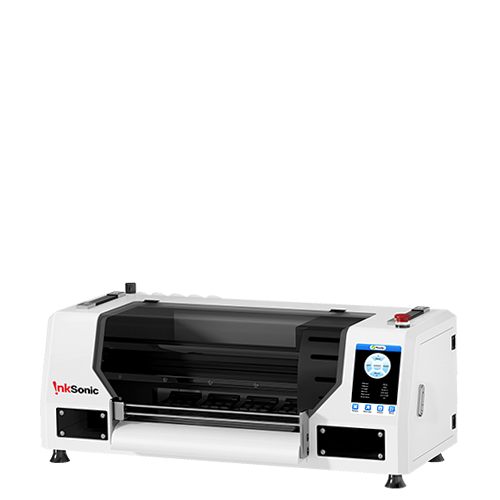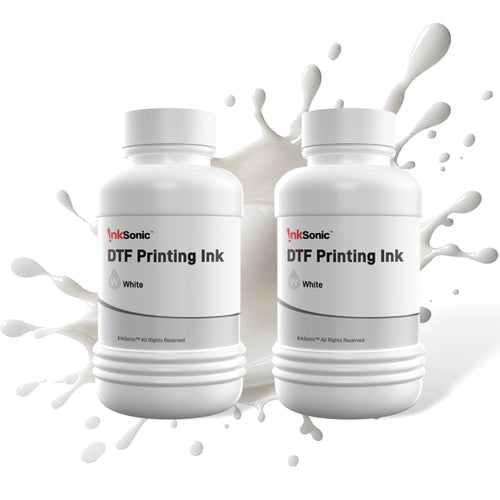Andrew’s childhood home was a small apartment in East Los Angeles with his mother and younger sister. His mom balanced two jobs during his childhood. She worked as a housekeeper in the mornings and a caregiver for the elderly patients in the evenings. Through her tireless work, Andrew learned the importance of dedication.
Andrew would spend time with his uncle Manny every weekend. Manny had an auto shop which, although not extravagant, was filled with tools, old radios, and the smell of coffee and oil. Manny taught him how to fix many things, such as cars and bikes. Andrew enjoyed problem solving and the satisfaction of using his hands. Though he didn’t speak much, he was proud to see things he worked on finally functioning.
Andrew’s initial attitude about life formed in this time. For him, the mantra was simple: a person should always strive to try and fix things, and push through life’s challenges.
Many years later, when his life changed, his mantra and mindset from years prior helped inspire him to restart his life.

Where It All Started
There was a time when three years ago, his life took a radical turn after a car accident. Luckily for him, he was not paralyzed. However, the physical trauma caused a number of injuries; working any kind of strenuous work became painful and not sustainable due to the injuries.
The impact of the injury did not only affect him physically. The recovery and unable to return to physical work put an impact on his financial situation as well. Medical bills piled up on top of not being able to physically work resulted in debt. For quite some time, Andrew struggled to figure out what to do next. He felt lost. It was a struggle to feel like he could ever find a job, or career that recognized the limits of his body but also allowed him to rebuild everything that he had. Some mornings, Andrew would wake up and never leave his bed; laying on the ceiling, angry that his body betrayed him. Andrew did not feel like himself anymore. Work was his identity. He was not defined by this accident, but without working, he felt invisible.
After Andrew had the accident, he had a lot of time just laid around—more time then he wanted to be. It was difficult for someone that had always worked with his hands to just be forced to rest. During this recovery process, Andrew found himself scrolling more, watching more videos, tutorials, and exploring side hustles (more than out of sheer need).
"I was committed to rebuilding my life, on my terms, and started looking for what ways I could create freelance work that actually fit with how I live now. I needed something flexible, low-impact, and meaningful—something that considered what my body could do while still allowing create and grow".
Andrew tried several jobs to stay afloat. He worked part-time at a hardware store, but the physical strain triggered his injuries. A remote customer service job left him mentally drained and disconnected. Food delivery seemed flexible, but long drives and stairs caused swelling and fatigue.
A Quiet Turning Point
One weekend, almost on a whim, Andrew agreed to help out a friend who was running a vintage clothing booth at a nearby flea market. The such set up — tables, racks, bins — was exhausting. But in a twist of fate, as people stopped by, Andrew found himself enjoying the conversations. Shoppers were asking where things were made, who the artists were on the prints and what they signified within the designs. And more to his surprise, after quite some time, he felt invigorated, not depleted.
It was a slight shift in energy, and a significant one: What if I sold something creative of my own?
Not just items for the sake of selling, but products with story, expression, and intention .
That day planted a seed. Andrew realized he missed making things. He missed that feeling of reaching people through something that mattered. He needed work that felt like it belonged to him. Something hands-on, low-impact, creative and that could grow.
"That was the moment I stopped looking for just a job—and started imagining a future I could actually build."
How Andrew Discovered DTF Printing—and Why He Chose It
Andrew had always been into streetwear culture and really loved local art — murals, graffiti, tattoo-style type of illustrations. Casually permafried one day in conversation with a friend who was doing digitized illustration, planting seed. It occurred to him that, despite his inability to draw, he could collaborate with artists and use their work as the foundation for something new.
While watching a YouTube vlog by an artist who had a small merch brand, everything finally fell into place that night. The creator had talked about how they used prints from their illustration on t-shirts and tote bags. Andrew's ears perked up. Printing art onto fabric? That sounds doable, he thought. It wasn’t heavy lifting. It didn’t need a storefront. And it felt connected to something meaningful—community, design, creativity.
He started digging deeper into printing methods. At first, he looked into screen printing —the classic. But the upfront cost of screens, inks, and space requirements made it a non-starter. He physically couldn’t handle large batch runs or setup work. DTG (Direct to Garment) seemed promising—beautiful detail, no screens—but the printers were expensive, needed to be cleaned often for maintenance, and never seemed to perform well with dark fabric. Andrew was on a low budget, and he needed reliability.

Then he tripped over DTF (Direct to Film) printing - a method especially a license to print bright designs onto transfer film, and then press onto all types of fabrics using a heat press. This was when he started to see the full potential of DTF printing - a process that allows for small, detailed, and bright designs to be printed on a variety of fabrics without the manual labour involved in other methods. It was portable, cheap, and most of all was flexible. DTF didn’t require pretreating garments. It was effective on cotton, polyester, and blends, even the random or rare materials he planned to use for everything from t-shirts and hoodies to canvas bags and even caps.
What finally convinced him to commit were the success stories he found from other small business owners. Many were just like him - working out of their homes and learning as they grew. He joined a few online networks and Facebook groups where he asked questions and connected with a few LA printers to observe their set ups. The consensus was that for an individual doing limited-run, multisubstrate work, DTF was the appropriate middle choice between cost, quality and utility.
“Because I’ve always loved getting my hands dirty, the thought of mastering everything myself didn’t scare me, but it excited me,” he said.
He plunged into forums, watched hours of tutorials and read manuals cover to cover. Solving problems step by step gave him a quiet confidence, especially after feeling so powerless during his recovery. Using the last of a small loan, he invested in a mid-level DTF printer and a reliable heat press.
He set them up in the garage, transforming the space into a compact, efficient studio. Every corner was arranged with intention—tools within reach, surfaces at the right height, lighting adjusted to reduce strain. He moved slowly, deliberately, learning how to tweak temperatures, align PET film, and cure adhesive powder without overbaking. Every new skill became a small victory.
And best of all, he could print on his own terms —at his own pace, without relying on vendors or waiting on someone else to get it right. No more miscommunications, no more quality compromises. For the first time in a long while, Andrew felt in control —not just of the process, but of his future.
That freedom meant everything.
DTF printing wasn’t just a method—it became Andrew’s way back into working with his hands. Into building something of his own.
He’s sought local painters, tattoo artists and illustrators, offering them the opportunity to turn their art into something people can wear — T-shirts, canvas totes, hoodies and sweatshirts, and limited-run items. He managed the printing, pressing and packaging himself, keeping physical strain at bay by spacing his work and making his workspace ergonomic.

His First Small Win
It was a gray Tuesday afternoon when the notification popped up on Andrew’s phone: “1 New Order – Size M, Black Hoodie.” For a brief moment, he thought it might be a mistake. He checked the name again, the delivery address— nope this was real! A stranger, someone he didn't even know had just purchased one of his designs.
It was a gray Tuesday afternoon when the notification popped up on Andrew’s phone: “1 New Order – Size M, Black Hoodie.” For a brief moment, he thought it might be a mistake. He checked the name again, the delivery address— nope this was real! A stranger, someone he didn't even know had just purchased one of his designs.
The hoodie featured an original hand-painted, mural of a monarch butterfly (that the local artist from Boyle Heights had painted), rising against a backdrop of LA palm trees and lowriders. It was the kind of art that felt close to him, home, identity-based art. He had only printed three of them, just to test the waters.
He packaged the order slowly, taking the care to smooth folds, to fold in a hand-written note:
“Thank you for supporting local art. Stay strong. — Andrew.”

Then he dropped it off at the post office with shaky hands and a nervous hope he didn’t want to admit.
A week passed. No word.
Then one night, while prepping a fresh batch of transfers, Andrew’s phone buzzed again.
It was a message sent to his store’s inbox:
“Hey—I just got the hoodie today and wow. Wearing this feels like wearing my neighborhood. 💛🔥”
Attached was a photo: a young woman standing in front of a mural that matched the design on the hoodie. She was smiling wide, sleeves slightly rolled, pride written all over her face.
Andrew was frozen. He just looked at the message and read it again. Three times. Four. Five.
Then the smile arrived — slow, deep, the kind that gets caught in your chest. It had been a long time since he let something break through that heaviness.
Validation. Joy. A flicker of belief.
He took a screenshot of the message and put it in a folder on his phone called “Reasons to Keep Going.”
Because that single hoodie, put on by someone who felt seen by it, meant more to me than any job ever did.
It wasn’t just a sale. It was the first time Andrew saw a glimpse of what he was building—something real, something that mattered.
What began as a handful of trial runs became a small but blossoming studio driven by community and creativity. Andrew named the studio after a phrase he used to say during his recovery: “Still Standing.” Every piece carried that quiet message of resilience.
Now, Andrew collaborates with artists across LA, gives a portion of profits back to them, and is working toward launching pop-ups and art fairs featuring local creators. His body may have changed—but his ability to build something meaningful didn’t go anywhere.
A Dream Bigger Than Himself
These days, Andrew’s small garage studio hums with quiet purpose. But internally, he is already dreaming far beyond those four walls. He talks often about the kind of space he wishes had existed when he was starting out—somewhere between a workshop, a classroom, and a community hub.
“One day,” he says, “I want to open a shared creative space. A real studio—with proper lighting, tables, printers, heat presses, maybe even a photography corner. But more than that—I want people like me in there. Folks who had a rough break, who maybe don’t have a degree or savings, but still have something to say.”
He imagines mentoring young artists from East LA, showing them how to turn their drawings into wearable art. He wants to teach them not just how to print—but how to sell, how to package, how to brand themselves. He envisions a space where single moms can learn a trade in the evening, where formerly injured workers can earn through creativity instead of breaking their bodies again.
“I don’t want this to just be about me,” Andrew says. “I want it to be a platform. A place where people feel like they can start again—like I did.”
To Andrew, DTF printing wasn’t just a solution. It became a stepping stone. A quiet revolution. And now, he’s building something worth passing on.

Andrew’s story isn’t just about learning to print or starting a small business—it’s about reclaiming agency after loss. What began as a quiet, desperate search for work turned into a creative path that reconnected him with his community, his roots, and himself. He converted pain into purpose. He built something with his hands again, at his own pace, in his own way; now the dream has expanded. One hoodie at a time, Andrew is laying the foundation for something bigger: a future where art, resilience, and opportunity intersect. A space where others like him—bruised but not broken—can create, grow, and rise. Just like he did.



































